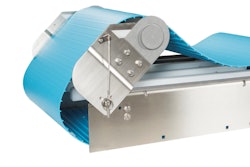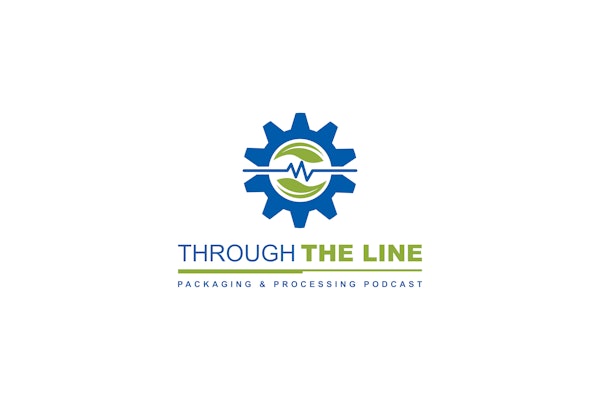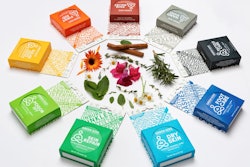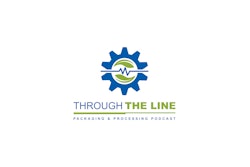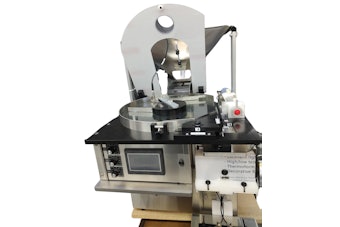In Davos, Switzerland, at the World Economic Forum, Tom Szaky, Founder and CEO of TerraCycle, Inc., unveiled what could be one of the most significant and disruptive advances in packaging to date. Along with a number of the world’s largest Consumer Packaged Goods companies and retailers, TerraCycle has created Loop™, a first-of-its-kind shopping platform that will enable consumers to responsibly consume products in customized, brand-specific, durable packaging that is collected, cleaned, refilled, and reused.

The platform will launch in France and in the northeastern U.S. this spring as a pilot, offering more than 300 products in reusable packaging from such heavy-hitters as Procter & Gamble, Nestlé, Unilever, PepsiCo, Mondelez International, and Danone, to name a few, as well as from smaller, startup companies. The products will be available both through e-commerce sites and at retail partner brick-and-mortar locations.
While Loop was created to eliminate single-use disposable packaging and product waste, its impact on package design has been extraordinary, Szaky told Packaging World in an interview before the announcement. “It’s not just about eliminating waste; it’s about enabling the future,” he said. “What brands have really started to see is that this is a platform through which they can commercialize innovation in packaging that was never possible in a disposable package—it was not even conceivable.”
Metal containers for Häagen-Dazs ice cream that keep contents frozen, toothbrushes with removable, replaceable heads from Oral B, and a stainless-steel Clorox package that keeps wipes wetter longer are just some of the innovations created for Loop.
Among the packages developed with luxury in mind are those for P&G’s Pantene haircare products, in stunning gold and white bottles. Says Procter & Gamble Vice President and Chief Sustainability Officer Virginie Helias, “At P&G, we are building on 180 years of innovation and world-class consumer insight to enable responsible consumption at scale. Through leading brands such as Pantene, Tide, and Cascade, we have developed new durable and refillable packaging that is delivered in a waste-free and hassle-free way as a part of the Loop platform. We’re proud to partner with TerraCycle as the first CPG company to be a part of this transformative program.”
A vision for a world without waste
For 15 years, recycling company TerraCycle has promoted and advanced the idea of a world without waste. It offers a range of free programs for the collection and recycling of hard-to-recycle materials, creating new products from the waste. Its most recent project was to establish the world’s largest supply chain for collecting and recycling ocean plastics, which are used by P&G for its Head & Shoulders haircare product bottles and its Fairy dish soap containers, as well as for packaging for Unilever’s prestige Ren Clean Skincare line.
While these efforts are worthwhile, Szaky says they are not enough to reach the goal of a world without waste. Hence, TerraCycle created Loop—a circular economy shopping platform whose time has come. “It was far less difficult than I thought it would be to get CPGs and retailers to invest in the platform,” he shares. “It’s like the world is ready for it.”
Szaky says he believes there were three factors that convinced CPGs to participate, even though it involved a complicated and expensive commitment. First was their trust in TerraCycle, built through longstanding relationships. “They knew we were not just a ‘fly-by-night’ operation,” he says.
Second was the packaging crisis brought on by the issue of ocean plastics—a topic that didn’t exist three or four years ago. “People always cared about waste, but it’s more of a crisis now,” he says. “And companies at their board levels are declaring it as a crisis in a way that’s never been done. In addition, there’s also a lot of legislation in the pipeline around anti-disposability [of packaging].”
Says David Blanchard, Chief R&D Officer of Unilever, a Loop partner, “We’re acutely aware of the causes and consequences of the linear ‘take-make-dispose’ model of consumption. And we want to change it. That’s why we’re proud to be a founding partner of the Loop Alliance with nine Unilever brands. These brands have all embraced the challenge to redefine how consumers access the products they love, while eliminating waste.”
The third factor, as mentioned earlier, was brand owners’ realization of the functional and aesthetic innovation opportunities afforded by reusable packaging. “What packaging people love about this is that now it’s not a race to the bottom on a price per unit, which it sort of was before. It was always how to make the pack cheaper,” says Szaky. “With Loop, cost is not the primary question. The primary question is, how durable is it?”
Design for reuse
To enter Loop as a manufacturer, the first “rule,” Szaky explains, is that you must move to a reusable package—“that’s simply not negotiable,” he adds.
Each CPG partner is responsible for their own package design, aided by guidelines and best practices developed by TerraCycle and logistics partner UPS. Through testing procedures conducted at its Package Design and Test Lab in Addison, IL, UPS identified solutions to mitigate material breakdowns, products leaks, exterior package designs that show signs of fatigue after limited use, and scratches on metal containers caused by metal closures. These solutions include such things as multi-threaded closures for product containers and a modified capping approach to reduce the risk of leaking products, among others.
What TerraCycle looks for in a finished package design is durability, cleanability, and a positive Life Cycle Analysis. “Those are the three things we watch for,” says Szaky. “But then everyone gets to do everything they could ever want to in a pack. You get a far greater range of design choices, because you’re not restricted to a tiny little price.
“So, a $1 package with 10 uses is 10 cents per use, but a $5 package with 100 uses is 5 cents per use. That’s actually pretty neat in the sense of being able to change the relationship with the economics of packaging.”
The goal for a Loop package is to be able to withstand 100-plus uses, which is not such a stretch if you consider how many times a consumer might refill a reusable water bottle. “Here’s the point,” says Szaky, “once you get to 100 uses, it’s actually not that hard to get into the thousands. It’s hard to know, because we haven’t been able to prove 10,000 uses, but for now we’re aiming for 100 or more uses for every container.”
The three most common types of materials being used for Loop packaging are, in order, stainless steel and aluminum, glass, and engineered plastics such as polycarbonate. So far, materials such as flexibles, disposable plastics, fibers, or leathers have not shown up in any Loop packaging.
Given that the aim of Loop is zero waste, the tote in which products are delivered and empty containers are returned is also reusable. Designed by UPS and TerraCycle, it can handle liquids, dry goods, and personal care products and features protective dividers made from materials that are easy to clean. The state-of-the-art tote can even keep frozen products frozen, and refrigerated products chilled, without a single disposable part. The tote offers a vast improvement in sustainability versus traditional e-commerce shippers made from single-use corrugated material may require void fill or insulation and cooling components for chilled or frozen products.
Consumer convenience
Another factor that makes Loop so timely is consumers’ growing acceptance and use of e-commerce for CPG products. Loop will have its own e-commerce sites—Loopstore.com in the U.S. and maboutiquelook.fr in France—and Loop products will also be available on some CPG and retail partner websites.
Retail partners such as Carrefour in France, Tesco in the U.K., and others will also be selling Loop products in their physical stores. In fact, Carrefour is so enthusiastic about the system it has put many of its private-label products into reusable packages.
In the case of products ordered through e-commerce, the “loop” begins when a consumer places an order online. Their products are then delivered to their doorstep in the reusable Loop tote. When they are done with a product, the consumer places the empty package in one of the totes and alerts Loop to pick it up. (Both products ordered through Loop as well as through its partners’ sites are collected by Loop.) For staple products the consumer wants replenished immediately, the pickup triggers a new shipment.
Consumers who purchase Loop products at a brick-and-mortar store can bring their empties directly back to the store.
One of the beauties of the program is that consumers don’t have to clean or sort the empties. “It’s a completely disposable experience,” says Szaky. Sorting and cleaning is done by TerraCycle, which not only has the technology for straightforward cleaning jobs (e.g., cleaning rigid containers), but is also developing a range of technologies to handle more complex packaging components such as trigger sprayers and pumps. The company plans to have a warehousing and cleaning facility in every region in which Loop products are sold.
For Loop, zero waste also means zero product waste. So, when TerraCycle receives containers, it evaluates the leftover or used product to see if it can be recovered or recycled. Products are categorized as non-recoverable, as in the case of orange juice or window cleaner, or recoverable. “For recovery, there are two types of products,” Szaky explains. “The first is a product you can recover, but it would be unreasonable to reuse it, such as a razor blade or a toothbrush, which we then recycle. The other is a product, such as the casing of a pen, that it’s not unreasonable to reuse.”
The final stage of the loop is the return of empty, clean packages to brand owners for refilling. The loop is closed when consumers receive new product in the packaging.
To ensure consumers return the empty packaging and the Loop totes, they pay a deposit for the items when they order the products. “This is key, since these are expensive packages,” says Szaky. “They are never owned by the consumer; the consumer borrows them. And, like anything you borrow, you put a deposit around it.”
When the consumer returns the package, they receive 100% of the deposit back—no matter the shape in which they return it. TerraCycle’s view is that the durability of the package is not the consumer’s responsibility; it’s the responsibility of those who made it.
Will Loop succeed?
There are many reasons Loop should succeed—and in a big way. Among them, the furor over disposable, single-use packaging, the ease of e-commerce, the enhanced consumer experience allowed through higher-quality packaging, and Loop’s appeal to CPGs pushing to meet aggressive sustainable packaging goals. But will it take off?
Szaky says signs are good. As more of the world’s largest CPGs join the platform, momentum is building, spurring others to join or be left behind. In just one week, he shares, SC Johnson with its Method and Ecover brands, global snacking company Pladis, and Reckitt Benckiser signed on. “And it wasn’t even a unique week,” he says.
Another sign boding well for Loop is the response it has received from the 25 families in New York and the 25 in Paris that have trialed the platform. Szaky says TerraCycle learned from these trials that once consumers start receiving their products in reusable packaging, they start getting “allergic” to disposability. “The question is, what is the tipping point?” he questions. “Do 20 percent of the products in your life have to be durable for you to say, ‘Forget disposability, I’m done.’”
Compared with other strategies launched to reduce or eliminate packaging, such as “package-free” stores and self-dispensing systems, Loop celebrates packaging, enhancing its many functions, such as beauty, product protection, and convenience.
“Packaging isn’t evil,” declares Szaky. “Neither is the idea of plastic or metal or paper. The evil, I think, is spending a lot of effort creating something awesome and then using it once and throwing it away.”





